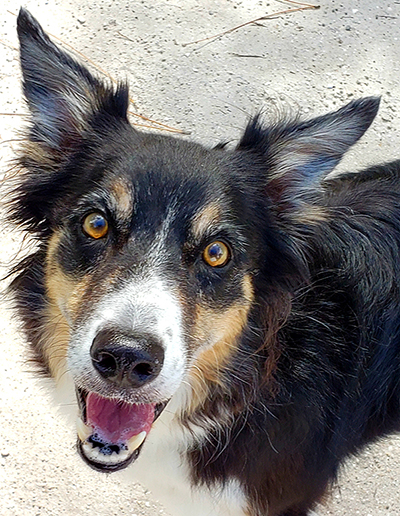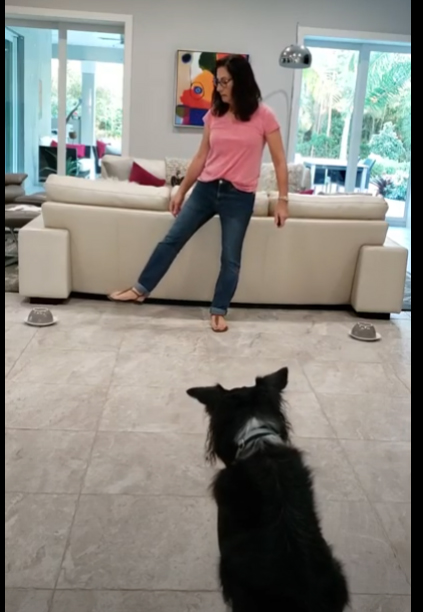Dog Cognition: Dogs Are Smarter Than You Think!
Dog cognition studies how dogs think about the world. It’s how they solve problems, make decisions, and perceive their environment.
There are a growing number of investigators and scientists in universities around the world who are studying the growing field of dog cognition and learning more about how dogs really think. They are learning that dogs are socially savvy and understand their humans well. Some feel that it is an evolutionary trait honed over thousands of years since wolves began to evolve into the dogs we see today. Others have a theory that they acquired this social intelligence based on the large amount of time spend around us humans. It is probably a combination of the two.
I decided to do a fun cognition test with my own dog.
I recently read an interesting experiment comparing dogs with young children by Gabriella Lakatos, et al, A comparative approach to dogs’ and human infants’ comprehension of various forms of pointing gestures. They investigated if dogs and 2-, and 3-year-old children living in similar social environments are able to understand different pointing gestures. It made me think about my dogs. Can they do the same thing? I decided to recreate the experiment with one of my own dogs, Zander, an 8-year-old neutered male border collie.
If I set up two bowls several feet away from Zander and pointed to one of them, would he choose to go to that bowl? Would it be random or would there be a correlation?
Setup
I first familiarized Zander with the two identical ceramic cereal bowls. I sat them face up on a plate with a treat in each one (Purebites liver). I allowed him to take a treat out of each of the bowls. Then the bowls were turned upside down on the plates and a treat was placed under each one. If he went to the wrong bowl, he would not be reinforced. I only lifted the bowl to provide access to the treats if he correctly chose.
I placed the bowls about 4’ on either side of me. Zander was then placed about 9’ in front of me in a sit. (If he did not have a reliable stay, I would have had someone gently restrain him by hooking a finger in his collar and standing neutrally.)
Experiment
In the first session, I used a full distal point, with my arm and finger extending away from my body. I also looked in the chosen direction. I pointed and looked at the bowl for about 3 seconds, placed my hand back at my side, looked straight ahead and released Zander from his position (“fly”).
If he went to the correct bowl (the one I pointed to) I lifted the bowl and he received the treat. If he did not, no treat was given. Ten repetitions were done in a random fashion.
In the next 10 trials I did cross-pointing with my arm extended across and past my body. I did not look at the bowl this time but continued to stare straight ahead.
In the last 10 trials I used a foot to point toward the bowl and partially turned my body in that direction. Again, the bowls were randomly chosen.
After each trial, Zander was returned to his starting point and both bowls were replenished in his sight.
Results
Here are the results and short video examples:
Distal Pointing: 90% accurate https://www.youtube.com/watch?v=V0morld07h4
Cross-pointing: 70% accurate https://www.youtube.com/watch?v=QmJJhlzlZFI
Foot pointing: 40% accurate https://www.youtube.com/watch?v=ExWZuWzLyBM
Zander understood hand pointing with 90% accuracy, but foot pointing turned out to be a skill he did not possess (less than half). He did a little worse than just guessing and even continued to want to go back to the bowl that he first chose incorrectly. In the final rep of foot pointing, he came toward me as if to have me help him and looked at one and then the other.
It would be interesting to see how he would do with distal pointing without me turning and looking at the correct bowl. This may have skewed the results.
The study pointed out that dogs understand pointing at about the same skill level as a 2-year-old child. Dogs are biased in the use of protruding body parts as directional signals (as opposed, say, to a hand crossing over the body to point). Three-year-olds successfully used all gestures as directional cues, while younger children and dogs could not understand certain cross-pointing.
We had a lot of fun recreating a portion of the experiment. Another consideration might be comparing Zander’s success with those of my other dogs and those of friends.
Try this with your dog and let us know how it turns out!
Want to learn more about canine cognition? Duke University has a free online course. Check it out at https://online.duke.edu/course/dog-emotion-cognition/.




